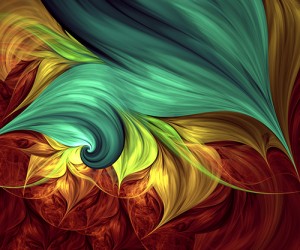 I enjoy listening to classical music but am not a big fan of synthesized music. Maybe I have worked around computers too long to appreciate the fact that a computer can produce art. In other words, I question whether the bridge between technology and art can actually be bridged. I wonder also about computers that can produce visual arts. Are they comparable to those works created by a traditional artist? Will computers ever make traditional sound and visual artists obsolete or does their value lie in aiding the human creation process? Lately, I have been reading about some new applications that may be spanning that bridge between art and technology.
I enjoy listening to classical music but am not a big fan of synthesized music. Maybe I have worked around computers too long to appreciate the fact that a computer can produce art. In other words, I question whether the bridge between technology and art can actually be bridged. I wonder also about computers that can produce visual arts. Are they comparable to those works created by a traditional artist? Will computers ever make traditional sound and visual artists obsolete or does their value lie in aiding the human creation process? Lately, I have been reading about some new applications that may be spanning that bridge between art and technology.
Sound Machines
German industrial automation company Festo has developed a robot controlled
music system that consists of five self-playing instruments. The system can “hear” or record a melody, then improvise and play it live with electrically controlled mechanisms that consist of one string and a sliding bar, which simulate fret action or the left hand of a musician. A hammer simulates right hand plucking or hammering or stroking of the string. They have built this mainly as a showcase for their factory automation capabilities, but it holds some real promise for creating and playing computer-controlled music.
Fine Art
Kenichi Yoneda, aka Kynd, is trained as a fine artist but has recently been creating computer-generated art that looks like traditional artwork in different simulated mediums. He is currently an electronics designer who programs computers to create artwork that looks like the real thing. His work can simulate oil, watercolors, or other techniques. To be clear, this is not a robot with a palette but digital artwork generated on a computer and printed or just displayed on digital monitors. Lately, he has been experimenting with artwork combined with sound in an attempt to improve on traditional computer animation. The results are very unique and engaging.
Thoughts
The two thoughts I have are these—first, what is art and second, how do we define it? I believe art is a personal expression. What is considered art by one person is simply noise to another, whether that be audio or visual arts or a combination. Secondly, will we, or have we already created a computer that will be able to create Mozart concertos, the works of the Rolling Stones, or artwork to rival Rembrandt or Andy Warhol? If so, will we still hold it in the same high regard as works created by an individual through training and inspiration? Do we value computer-generated artwork the same as human creations?
As we continue to refine computers and try to endow them with humanistic capabilities and reasoning through advanced algorithms, it is reasonable to think that we will have to face that question. What is art? What will art museums look like in the future? I would love to hear your opinion so that we can explore this topic further.
 About Kelly Brown
About Kelly Brown
Kelly Brown is an IT professional and assistant professor of practice for the UO Applied Information Management Master’s Degree Program. He writes about IT and business topics that keep him up at night.


